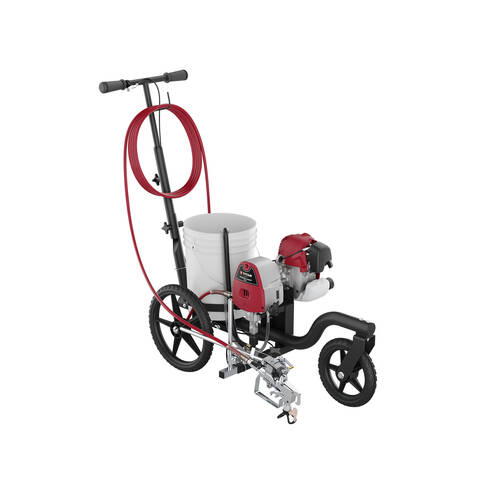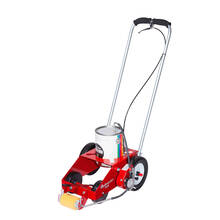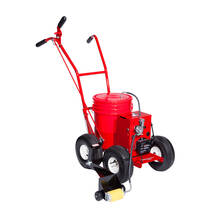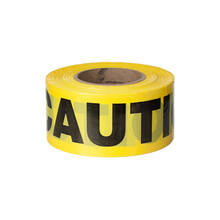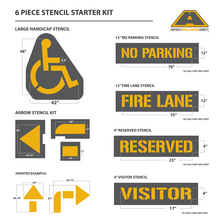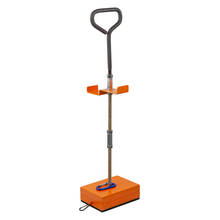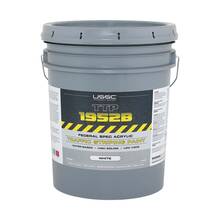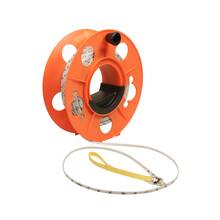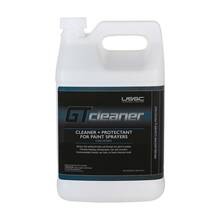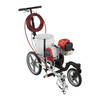At first glance, the biggest difference between the Titan PowrLiner 550 vs the PowrLiner 850, is price. So what's actually different?
There are a handful of key difference between the PowrLiner 550 and 850 that we feel is worth the extra money, or savings, depending on which direction you plan to go.
Fixed Front Wheel
The Titan PowrLiner 550 has a fixed front wheel which means it's locked in the "go-straight" position, forever. If you want to turn or re-position the PowrLiner 550, you have to push down on the handle bars to lift the front wheel. It's not a big deal, but it may or may not be for you.
When you compare the 550 to the PowrLiner 850, the 850 has a free rotating front wheel that you can also lock if you only want to go straight. In reality, the PowrLiner 850 gives you the best of both worlds. If you're painting football fields or line striping straight lines, then you won't have a problem with the fixed wheel on the 550. However, if you plan to do any circles or arcs, you'll want the PowrLiner 850.
Non-Detachable Gun
The PowrLiner 550 does NOT have a detachable gun for stencils. You can still do stencils by rolling the entire machine over the stencil, but it's a pain when compared to the PowrLiner 850 which does have a detachable gun and plenty of hose to walk around. If you plan to spray curbs, it's the same scenario of manuvering the 550 in a weird position to actually spray the curb. If stencils or curbs are important, you'll want to look more closely at the PowrLiner 850.
PSI Fixed Pressure Output
The PL550 has a fixed pressure output of 3000 PSI. This means you're either all or nothing when it comes to the pressure output and it doesn't make it a good fieldmarking striper for grass fields. In contrast, the PL850 has an adjustable pressure valve that lets you dial in the pressure between 400 PSI and 3000 PSI.
No Auto Oiler
The PowrLiner 550 doesn't have any type of easy piston lube setup when compared to the PowerLiner 850. The 850 has a special piston lube setup that let's you shoot a squirt of oil into the piston area for smooth operation.

